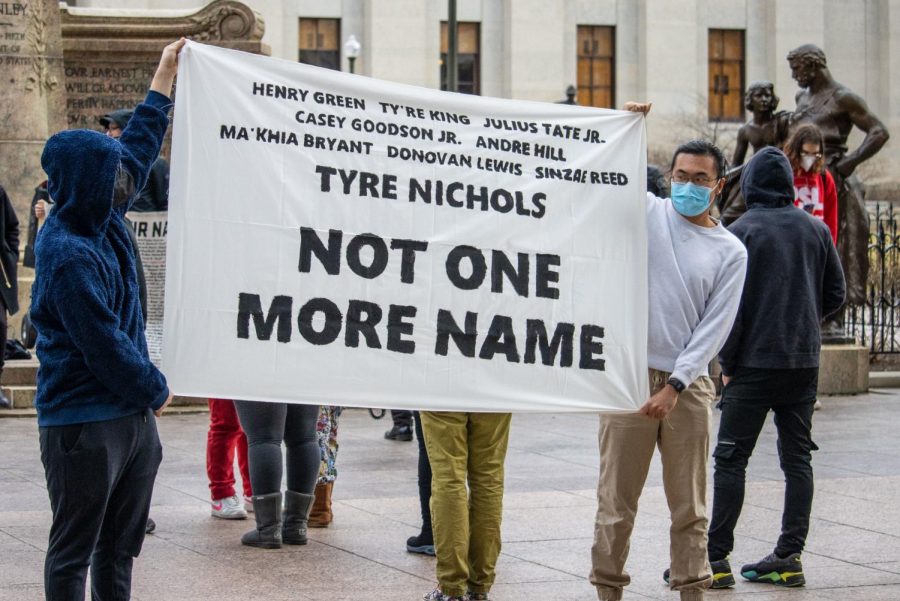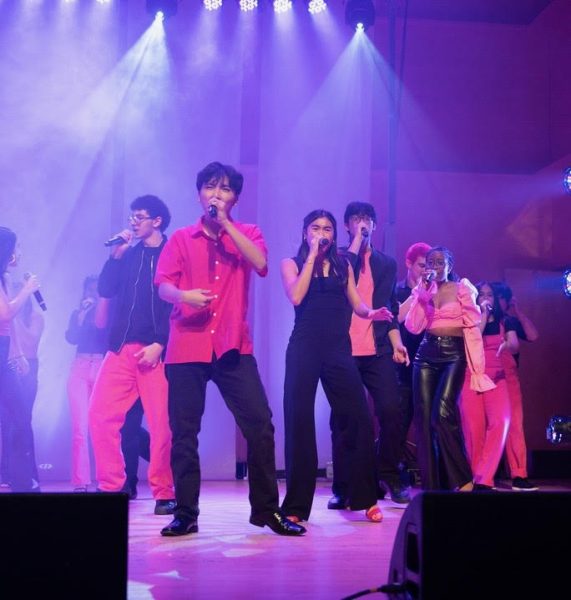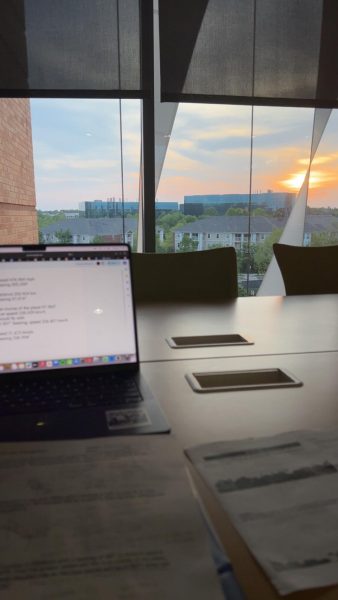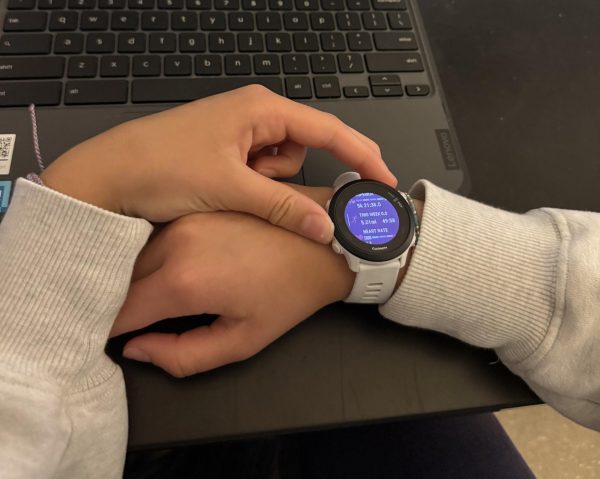Reviving the humanity of hashtags: The death of Tyre Nichols and the overexposure to body cam videos
Photo used with permission from Google Commons
Protesters of Tyre Nichols’ unlawful murder stand in front of Ohio Statehouse 8 with a chilling reminder of previous unjust police brutality.
Happy Black History Month. As we arrive at the end of this month, it has become glaringly obvious that the original purpose of BHM’s inauguration in 1976 has shifted from a celebration of the accomplishments of Black culture to a ceaseless vigil.
With the increased use of police body cameras and circulation of Black people represented as hashtags on social media, American society has been forced to reckon with the continual carnage of Black people in high definition. While there are hundreds if not thousands of people to talk about in this article, I want to focus on the one that has been broadcast the most recently: Tyre Nichols.
For some background, Tyre Nichols was a 29-year-old Black man beaten to death by five Memphis police officers on Jan. 27. The attack on Nichols lasted almost three minutes, and while I could describe the gruesomeness to you in words, you could very easily find the video being looped on News 5 at 6 and watch the end of Tyre Nichols’ life play out in real time.
The gore of body cam footage being showcased for the internet to watch and comment about has altered from a key piece of evidence in judicial sentencing to a tangible piece of psychological torment for Black people across the nation. Even though the increased mandates for police officers to wear body cams and record their everyday conduct has given multiple families justice after injury or death to their loved ones at the hand of on-duty police officers, the exposure to this gore on the internet has rippling effects in the way that we view death as a nation.
Trauma is defined as the lasting emotional response that often results from living through a distressing event. When discussing an event that has happened in different contexts to different people, complex trauma is more applicable, as it pertains to exposure to multiple varied traumatic events in an often interpersonal manner.
In this context, trauma is formed when people are affected by police brutality in any way, shape or form. Whether they knew the victim personally or just happened to read about it in the paper, complex trauma settles and builds its foundation. This singular viewing of a group of people purposely harming and killing another sets a precedent for anxiety and fear surrounding police officers in general. Now, imagine adding a video of that exact violence to the conversation and seeing that video every day constantly as soon as you open social media. The continual exposure to these tremendously violent videos and their existence in the realm of social media causes eventual desensitization to these issues, and thereby defeats the original purpose of putting them into the public eye.
Despite the fact that desensitization as a whole isn’t a negative, overexposure to violent videos of Black people being slowly beaten to death causes us to in turn resist their humanity and places them as martyrs in the eternal fight for true Civil Rights. For example, when I think about George Floyd, the first things that come to mind are the hashtags that spread all over social media about him, the signs with his name on them, and the countless videos of his mother sobbing in front of investigators and journalists. I don’t think about him as a person, or even reckon with the idea that he was a father on his way home from the grocery store after his job as a truck driver when he met his killers.
When we over-circulate the violence that these victims experience, we quickly forget the aspects that made them human, and focus on what their death can do for the good of other people. We see them on the ground, tired and unconscious, and the humanity of their lives, their hobbies and their experiences fade as the black squares populate Instagram and we receive breaking news of another unjust murder. So, to replace circulating body camera footage and in order for us to truly face the music regarding the death of Tyre Nichols, I want to share some of his life.
Although Tyre Nichols worked at a Memphis Fedex during the day, he spent much more of his time skateboarding. His family members recount him as an incredibly positive person, who would take any chance that he could to get outside and skate at his local park. Skating was a staple of his life growing up in Sacramento, and he was never one to turn down attempting a trick, no matter how radical or dangerous it seemed. His community revered him as a beam of light, and in the skating community he was deemed a local legend, committed and actively doing what he loved.
In spite of his terribly unfortunate death, the most important thing that I want to highlight about Tyre Nichols is that he was an ordinary man. He lived a simple life with hobbies and friends and aspirations just like everyone else. A lot of times when we see people, like Breonna Taylor and George Floyd, depicted as internet buzzwords, we idolize these victims, making them out to be superheroes to almost justify their untimely and unlawful deaths or characterize them as events rather than the series of events that led to their demise. But these are simply regular people. Tyre Nichols was a regular man, and as we mourn his death, we must remember to honor the humanity of police brutality victims and their lives before they came to a brutal end.
Your donation will support the student journalists of Thomas S. Wootton High School. Your contribution will allow us to purchase equipment and cover our annual website hosting costs.
Margarita is a 2023 graduate.







